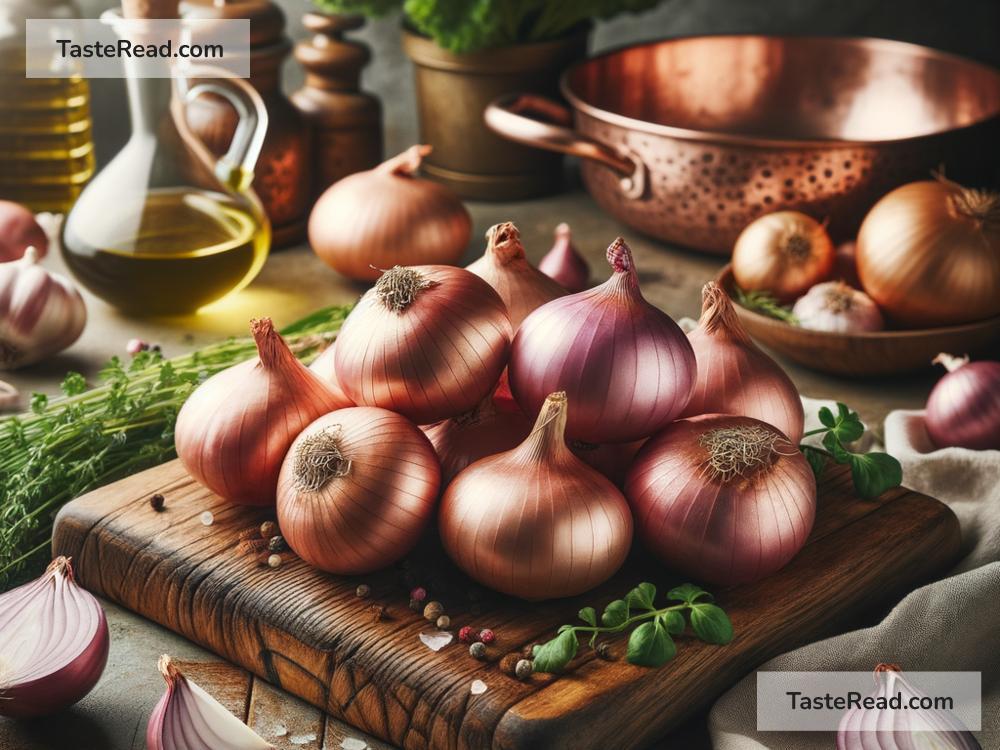The Curious Story of Shallots in Gourmet Recipes
Shallots might seem like simple little bulbs, but they hold an important place in kitchens around the world, especially in gourmet cooking. If you’ve ever tasted a perfect sauce or a delicate vinaigrette and wondered what added that touch of magic, the answer might just be shallots. These small, humble vegetables have a fascinating story and an undeniable impact on cuisine. Let’s explore the curious world of shallots and why chefs love them so much.
What Are Shallots?
Shallots look like a smaller, sleeker cousin of onions, and that’s partly true. They belong to the same allium family, which includes onions, garlic, leeks, and scallions. Their appearance is distinct—they come in clusters with reddish-brown or golden skins, and when peeled, they reveal pale flesh that’s sometimes tinged with purple.
Shallots have a mild, slightly sweet flavor compared to sharper onions and pungent garlic. This makes them a favorite ingredient in gourmet recipes, where balance and subtlety are key. While onions pack a punch and garlic can dominate a dish, shallots lend a gentle, sophisticated flavor that enhances without overpowering.
A Brief History of Shallots
Shallots have an interesting history that goes back thousands of years. They are believed to have originated in Central or Southwest Asia and were brought to Europe by merchants and travelers. The word “shallot” comes from the Old French term eschalotte and is linked to the ancient city of Ashkelon in modern-day Israel, where shallots were historically traded.
Over the centuries, shallots became popular in European cooking, particularly in French cuisine. French chefs embraced the shallot for its ability to make sauces, stews, and dressings shine. Today, shallots are grown and enjoyed worldwide, offering a touch of elegance to dishes in every corner of the globe.
Why Do Chefs Love Shallots?
Many chefs swear by shallots and use them in their most prized recipes. What makes shallots so special? Here are a few reasons:
-
Flavorful but Balanced: Shallots have a rich, complex flavor that is milder than onions. They are sweet, earthy, and slightly garlicky, making them perfect for gourmet recipes that require subtlety. Their taste blends well with other ingredients, enhancing the dish rather than overshadowing it.
-
Versatility: Shallots can be eaten raw or cooked, and they lend themselves to a wide range of dishes. You’ll find shallots in soups, sauces, dressings, marinades, and even stir-fries. They can be minced, sliced, roasted, or caramelized—the possibilities are endless.
-
Aroma and Texture: When cooked, shallots release a fragrant aroma that makes any kitchen smell amazing. Their texture is silky and soft, which helps give sauces and gravies a smooth, luxurious feel.
-
Elegant Presentation: In fine dining, appearance is part of the experience. Shallots cook down beautifully and are often used to add a touch of refinement to dishes. Whether sprinkled into a sauce or layered in a tart, they bring a subtle charm to the plate.
Shallots in Gourmet Recipes
Shallots play a starring role in many famous gourmet recipes, some of which you may recognize. Let’s look at a few ways shallots are used:
1. Classic French Sauces
Shallots are a key ingredient in classic French sauces, such as Béarnaise and Bordelaise. They are sautéed in butter and combined with wine, vinegar, and herbs to create rich, flavorful sauces that elevate steak, fish, and vegetables.
2. Vinaigrettes and Dressings
Raw shallots are often minced and whisked with olive oil, vinegar, mustard, and honey to create delicious salad dressings. Their mild flavor works perfectly in vinaigrettes, adding depth without being overwhelming.
3. Roasted or Caramelized
Roasted shallots turn sweet and melt-in-your-mouth tender. Caramelized shallots, cooked slowly until they become golden and jammy, are a chef’s secret weapon for enhancing pastas, risottos, and roasted meats.
4. Condiments
Pickled shallots are popular as a condiment, lending a tangy sweetness to tacos, sandwiches, and grilled dishes. They bring a burst of brightness that complements richer foods.
5. Soup Bases
In many gourmet soups, finely minced shallots are used as a base. When sautéed in butter or oil, they create a flavorful starting point for hearty vegetable, mushroom, or seafood soups.
Fun Facts About Shallots
- Shallots are often confused with onions, but they are distinct. While onions grow as a single bulb, shallots form clusters of smaller bulbs.
- Shallots are full of nutrients, including vitamins, minerals, and antioxidants. They are said to promote heart health and boost immunity.
- The French have a term for the phenomenon of shallots taking dishes to the next level: “le goût sublime,” meaning “the sublime taste.”
How to Use Shallots in Your Kitchen
Ready to cook with shallots? Here are some tips:
– To peel shallots, soak them in warm water for a few minutes to loosen their skins.
– Use a sharp knife to slice or mince shallots, as their delicate structure can bruise easily.
– For a deeper flavor, sauté shallots in butter or olive oil until they turn golden and fragrant.
– Incorporate shallots in sauces, dressings, or as a garnish for roasted vegetables and meats.
Conclusion
Shallots may not have the fame of onions or garlic, but their charm lies in their quiet sophistication. They enrich dishes with a subtle sweetness, balancing flavors like no other ingredient. It’s no wonder chefs across the globe cherish shallots as a must-have in their kitchens. Whether you’re whipping up a fancy dinner or a simple salad, don’t underestimate the power of this humble bulb. Give shallots a try, and discover how this curious ingredient can turn your cooking into something truly special.


